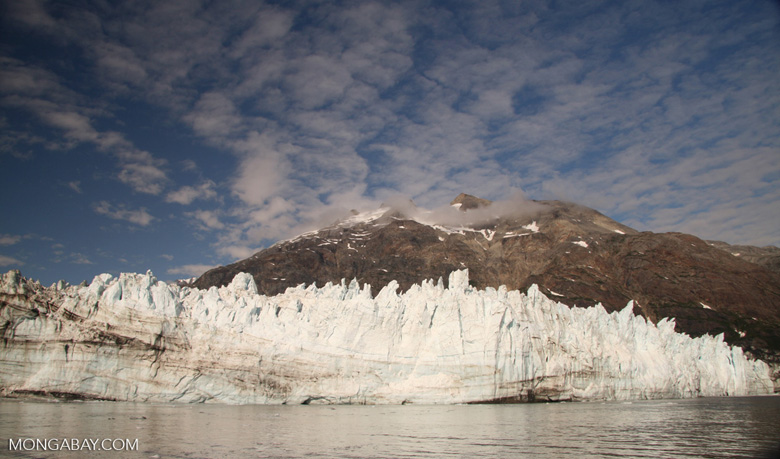- This post is a commentary. The views expressed are those of the authors.
- Following the recent flood of national climate change commitments, or Intended Nationally Determined Contributions (INDCs), the United Nations uploaded the newest draft of the upcoming Paris Agreement.
- Unlike past installments, the new document resembles a proper draft treaty, rather than a tornado-wrecked brainstorming session. A far cry from the incremental, inch-worm-pace that critics feared, the new draft agreement shows that the Co-Chairs have been listening attentively, and have tried to accelerate negotiations by presenting something more streamlined.
Just a week after Shell scrapped its artic drilling plans, the climate has another reason to celebrate. Following the recent flood of national climate change commitments, or Intended Nationally Determined Contributions (INDCs), the United Nations uploaded the newest draft of the upcoming Paris Agreement. Unlike past installments, the new document resembles a proper draft treaty, rather than a tornado-wrecked brainstorming session. A far cry from the incremental, inch-worm-pace that critics feared, the new draft agreement shows that the Co-Chairs have been listening attentively, and have tried to accelerate negotiations by presenting something more streamlined. The new document could ramp up the negotiations, but only if countries see it as progress.
By way of a review: This December will bring the annual United Nations climate negotiations to Paris for the 21st Conference of the Parties (COP 21). The COP 21 meeting is the most widely anticipated climate change COP since the 2009 negotiations in Copenhagen, which began with eager expectation, and ended in teargas and frustration. Since then, a negotiating track called the ADP has met regularly with the mandate to draft a binding climate agreement that can receive worldwide adoption as a successor to the Kyoto Protocol. Currently, the draft text involves two pieces: the historic Paris Agreement and a lower-profile COP decision to operationalize the Agreement, together dubbed the “Paris climate package.” The absolute deadline for the final Paris package is December 11th, 2015.
The last session of ADP negotiations in September kicked up a mess of documents. To understand the momentum on a particular topic, say, climate finance, one must scrutinize four distinct pieces of text simultaneously. At countries’ behest, the ADP Co-Chairs, Ahmed Djoghlaf and Daniel Reifsnyder, scrapped the overworked draft and forged a transformed text.
In a metamorphosis reminiscent of the paradoxical frog, the new document is less than one-fourth the length of its previous life cycle. Only 23% of the new document contains text essentially identical to the last iteration. Gone are the immense walls of competing words to scale and the clauses like river deltas, splitting into ever-smaller options and a muck of brackets, utterly un-navigable. Instead, the new draft text is a set of short, clean points.

Overall, the text shows that the Co-Chairs have tried to balance the sentiments of various Parties, or constituent countries. The draft Agreement tips its hat to gender-sensitivity, indigenous knowledge, ecosystems, and the plight of Least Developed Countries. Loss and Damage, a controversial section concerning unpreventable climate change impacts, such as superstorms forcing massive resettlement, is now included in the Agreement. Honoring the sentiments of the G77/China, the developing country group, the new draft decision includes a detailed proposal for Workstream 2, the preparatory period before the Paris Agreement comes into effect in 2020. By recognizing the concerns and requests of Parties during the previous round of negotiations, the new draft text primes negotiators to wrestle over substance, instead of semantics.
In terms of the concrete and operational aspects of the draft Agreement, those looking solely for emissions reduction goals will not be impressed. In the first article on mitigation, both the level of emissions reductions and the deadline for reaching this level are still to be determined.
Rather, the work of the fresh draft Agreement is to iterate INDCs, the voluntary climate change targets submitted by countries in the lead up to Paris. In the new draft, these entities, currently termed ”nationally determined mitigation contributions,” are established as a means for countries to regularly share their plans for scaling back emissions. The new draft proposes that these will be communicated every five years in a public registry and will demonstrate enhanced efforts from those previously stated. In other words, countries will publically declare their new, stronger targets to each other every five years.
The draft Agreement establishes a new framework for transparency, aiming to clarify global progress towards a net zero carbon future. This framework will both consider political progress and the best science, placing the finger of negotiations on the pulse of climate change. We can imagine something like an official UN Climate Action Tracker factoring in to future negotiations, a way to keep Parties feeling the heat in coming years.
The draft COP decision floats the possibility of a new market mechanism with tradable credits, essentially a comeback tour for the Clean Development Mechanism and other Kyoto Protocol-era emissions trading tools. The new market mechanism would allow developed countries to reduce emissions by implementing sustainable development projects in developing countries, the lowest cost route for mitigation.
Alongside the above, the new draft Paris package establishes an array of procedures, technical examinations, and appointments whose details are too wonky for this article, but worth an honorable mention nonetheless.
Together, these functional pieces capture an emerging understanding of the UNFCCC (the United Nations Framework Convention on Climate Change, comprised of the negotiations and agreements). The articles continue a paradigm shift begun with the INDC format: each country offers it own contributions to address climate change, aiming to move beyond unproductive squabbling over universal targets and standardized compliance formats. The new draft document further clarifies that the UNFCCC will not be a simple top-down process, where countries negotiate new commitments and states and localities later fulfill them. Rather, the negotiations come from the bottom-up, a process framing the realistic (and hopefully ambitious) possibilities for fighting climate change in states, regions and other non-national entities.

The worldwide hope for the COP in Paris is a “universal climate agreement,” binding for all countries. This new draft Agreement is binding, but its requirement is a process of mutual communication, rather than a precise target. It sets systems in place. At its core, the Co-Chairs’ proposed draft recognizes that political progress on climate change is built on good data, and a feedback loop of trust & verification.
Structural progress aside, many items are currently absent from the Agreement. Although REDD+, a payment system for reducing emissions from deforestation, is ready for launch after ten years of work, the new Paris package makes no reference to REDD+, and only one to forests at all. And although oceans absorb nearly half of the human-caused greenhouse gases and about 93% of the added heat on Earth from climate change, the word “ocean” is unmentioned. The text offers no process for defining “developing” and “developed” countries, or for updating these constituencies as times change.
Also missing is the emerging notion that funding to developing countries should pay equally for adaptation and for mitigation, instead replaced by a vague endorsement of “balance.” Likewise, there is no mention of specific finance targets, timelines, or mechanisms. The “climate change displacement coordination facility,” a provision for managing climate-induced refugee crises, is conspicuously absent, along with many other specific proposals.
These details and others will be debated at the end of October, during the last round of ADP negotiations before Paris. The ideas with sufficient country support will be included in the final draft Paris package, and the ideas that face substantial resistance will either be left out or will be some of the most contentious topics during the final COP negotiations in December.
On the whole, the new draft of October 5th is a beacon of possibility. The document does an impressive job of synthesizing previous concepts and cutting pages. Negotiators no longer need to hoist a hefty text and try to sail directly into the wind.

Whether or not this new tack is ultimately judged a move in the right direction, however, will depend on if each country feels that its positions have been adequately represented for one of humankind’s most pressing and complex challenges. But no one ever presumed that solving global climate change through the consensus-based approach of the United Nations would be easy.
If every nation on Earth does agree to a new Paris Agreement by the end of year, it will largely resemble this newest draft text. Such a Paris Agreement would also represent a major victory for the United Nations, for multilateralism, and for using science and frank international discussion to forge paths forward to avert grave harm. Alternatively, the world could also watch a different manner of historic moment unfold in Paris later this year, one where vanity and acrimony and rigidity triumph over reason and compromise and consensus.
Patrick Cage is a Research Fellow for the Carbon Institute and John-O Niles is the Director of the Carbon Institute.
